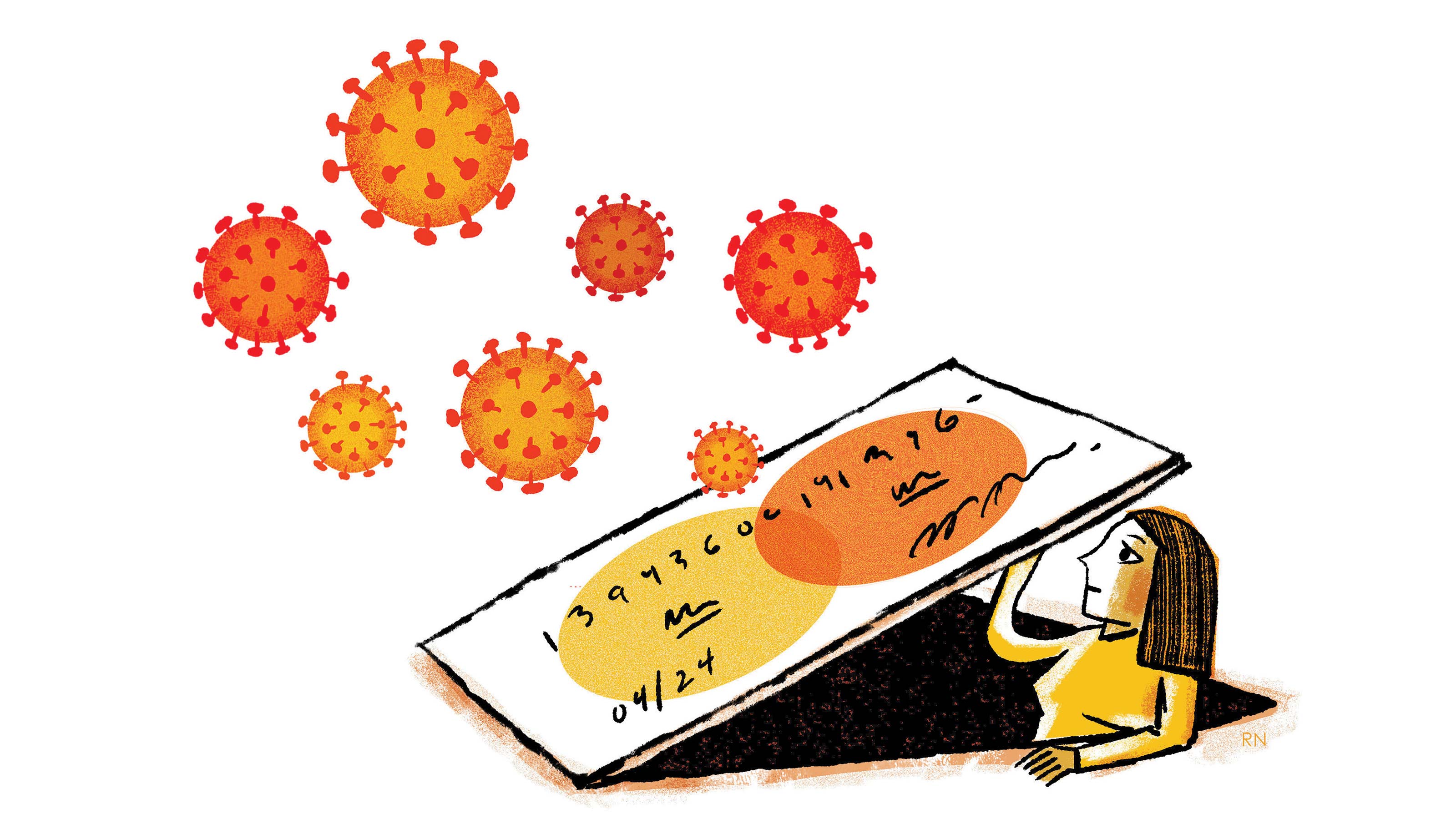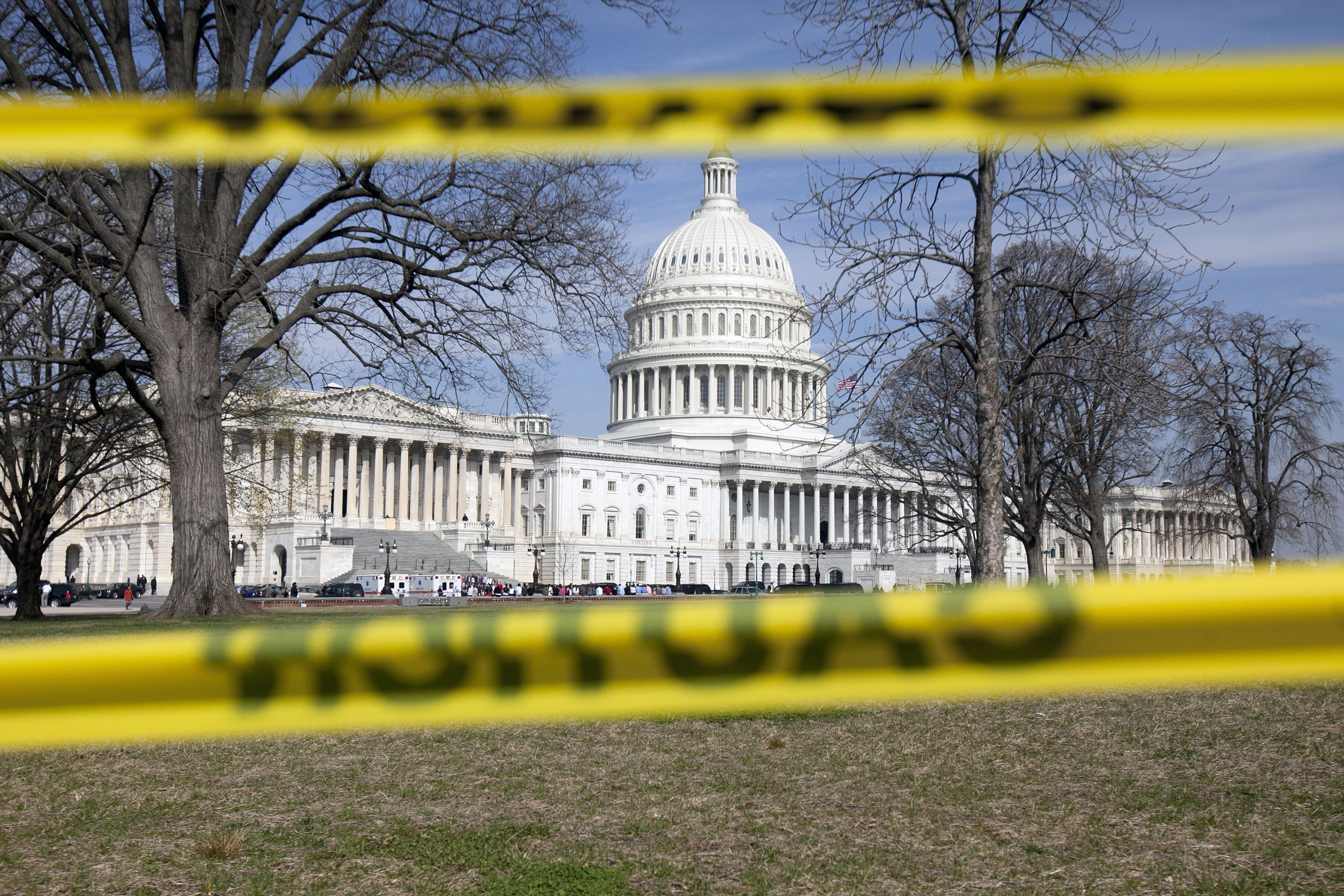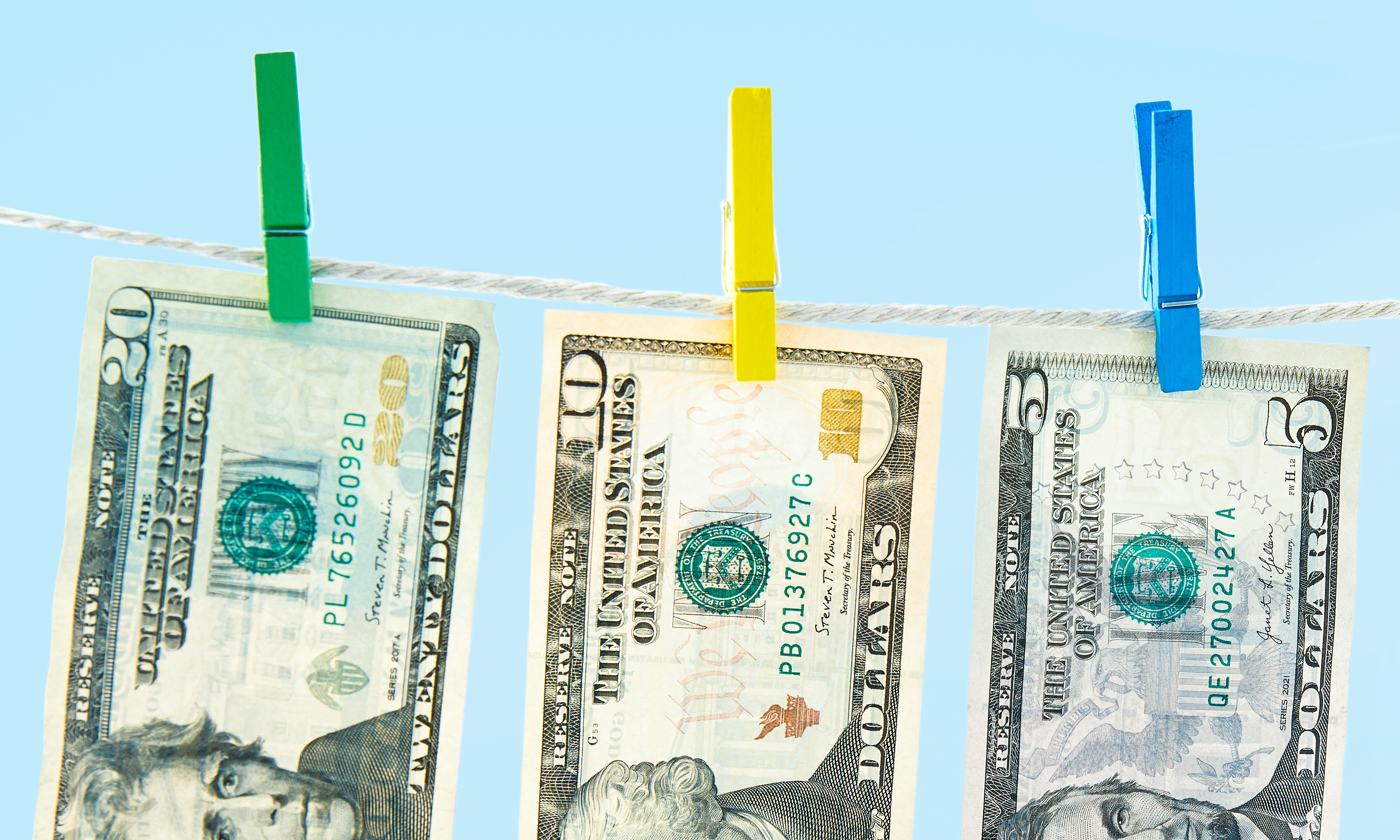Smart Strategies to Tackle Your Debt
Millions of Americans facing furloughs and layoffs turned to credit cards to stay afloat. Here’s how to get out from under burgeoning balances.


When the pandemic hit and the restaurant that Eric S. managed in Brighton, Mich., closed its doors temporarily, Eric filed for unemployment insurance benefits. When the business reopened a couple of months later and Eric returned to work, his hours were cut in half.
Although Eric and his wife managed to keep up with their mortgage payments, the couple found themselves strapped for cash and began to fall behind on their credit card bills. By September, they had accrued about $13,000 in credit card debt, and Eric’s credit score had dropped nearly 75 points, to the low 600s. “I felt like I was losing control,” he says. “It also put a lot of stress on our marriage.”
The couple sought out a credit counselor, who helped them retool their budget—getting rid of their Hulu and Netflix subscriptions alone saved them $70 a month—and begin paying down their debt. Just two months later they had shaved $3,000 off their total balance. “We’ve learned how to manage our money a lot better from this whole experience,” Eric says.
From just $107.88 $24.99 for Kiplinger Personal Finance
Become a smarter, better informed investor. Subscribe from just $107.88 $24.99, plus get up to 4 Special Issues

Sign up for Kiplinger’s Free Newsletters
Profit and prosper with the best of expert advice on investing, taxes, retirement, personal finance and more - straight to your e-mail.
Profit and prosper with the best of expert advice - straight to your e-mail.
The debt divide
The coronavirus crisis has been a double-edged sword for Americans in terms of debt. First, the good news: After receiving an infusion of cash from stimulus checks last spring, millions of consumers used their relief funds to pay down debt. On April 15, 2020, as the first major wave of checks hit Americans’ bank accounts, there was a near-instantaneous increase in debt payments, according to a TrueAccord study of data from 12 million U.S. consumers.
Moreover, a majority of Americans have managed to stay on top of their credit card bills, an October LendingTree study found. The survey, which analyzed credit reports of nearly 7,300 consumers who had paid off at least $1,000 in credit card debt in a month’s period, found that nearly 6 in 10 borrowers (59%) maintained a zero balance on their credit card three months later. (The average FICO score even hit an all-time high of 711 in July, according to Fair Isaac Corp., the data analytics firm behind the credit rating.)
However, “in some ways it’s a tale of two cities,” says Bruce McClary, a spokesman for the National Foundation for Credit Counseling (NFCC), which represents nonprofit credit counseling agencies. “While a number of Americans have been able to pay down their credit card debt during the pandemic, some people are really struggling because they’ve been laid off or have had their hours cut.” Many of those people don’t have a financial safety net, he says, “so they’ve had to fall back on credit cards.”
There’s also a large number of Americans grappling with unpaid medical bills because of the pandemic. By last June, roughly 7.7 million workers had lost jobs with employer-sponsored health insurance since mid March, a Commonwealth Fund report found; these health plans covered 6.9 million dependents. And despite some job gains in the third quarter of 2020, nearly 7 million Americans were still collecting unemployment insurance at the end of October, the U.S. Department of Labor reports.
The U.S. saw more than 65,000 COVID-19 hospitalizations between March 1 and October 24, according to data from the Centers for Disease Control and Prevention. Nationally, the average charge for a hospital stay for a COVID-19 patient was $73,300, according to FAIR Health Inc., a nonprofit health care industry tracker.
Conquering credit card debt
If you’ve fallen behind on your bills, here are strategies you can use to pay down your debt.
Talk to your creditor. Many credit card companies began offering customers relief programs when the pandemic started. Some of these programs have since expired, but some still exist, McClary says. (As of press time, American Express was still offering qualifying customers support through flexible bill payments and lower interest rates.)
If your credit card company no longer advertises COVID-related assistance programs, McClary still recommends contacting your provider. “It’s a known fact that creditors offer relief programs off the menu,” he says. “You’ll have to show that you’re facing a hardship, but companies may be able to provide some kind of solution for you, at least in the short term.”
If you are on a deferment plan, check in each billing cycle, says Michelle Jones, chief external affairs officer at Money Management International, a nonprofit financial counseling agency in Sugar Land, Texas. “Some credit card companies are making decisions every 30 days on whether to extend deferments,” she says.
Request a lower interest rate. If your credit score has improved, the interest rate you’re paying on your card may not be the lowest rate you could be paying, says McClary. Ted Rossman, a credit industry analyst at CreditCards.com, agrees: “They’re unlikely to give you a huge decrease in your APR, but every little bit counts.”
Transfer your balance to a new card. Transferring the balance on a high-interest credit card to a card with a low or 0% introductory interest rate can reduce the interest you’ll pay on your debt. The catch? Not everyone qualifies, and if you don’t pay down the balance while you’re getting the rate break, you could end up back where you started. “Balance transfers have gotten a lot harder to obtain during the pandemic,” Rossman says. “Right now, you typically need a 735 credit score to qualify for a balance transfer card. Last year, it was about 710.”
Look for a card that has low balance-transfer fees. For example, Navy Federal Credit Union’s Platinum credit card has no balance-transfer fees, and it charges 0% introductory APR on balance transfers for the first 12 months.
Pay off high-interest credit cards first. If you have outstanding debt on more than one credit card, there are two approaches you can take: the debt snowball method or the debt avalanche method. The snowball method entails paying off your cards in order from the smallest balance to the largest, which can help you gain momentum (much like rolling a snowball down a hill). The avalanche method targets debts on the cards with the highest interest rates first.
Jones prefers the avalanche method. Although paying off your smallest debt first can give you a mental victory, “in terms of minimizing what you pay in interest over the life of your credit card debt, you really want to start by paying off the credit card with the highest interest rate,” she says.
See a credit counselor. Not sure what path you should take to pay off credit card debt? Talk to a nonprofit credit counselor (you can find one at nfcc.org). This financial professional can sit down with you to assess your finances and help you devise a customized plan to pay off your debt. They may also be able to negotiate with creditors on your behalf.
McClary says the first session with a nonprofit credit counselor is usually free. Plus, “they offer advice on all types of debt, not just credit card debt,” he says. If you enroll in a debt-management plan with the counselor, you’ll be charged a one-time program-activation fee of $30 to $50, plus a monthly fee of $20 to $75.
Conquering medical debt
If you’ve lost your job and your employer-sponsored health insurance, you may be able to retain your employer’s health insurance plan through the Consolidated Omnibus Budget Reconciliation Act, or COBRA. You’ll have to pay the full cost of the premiums, but you can extend coverage for up to 18 months. (For more strategies, see Finding Affordable Health Care Now.)
Although keeping your health insurance won’t help you pay off existing medical bills, it will help protect you from accumulating more medical debt. “People who don’t have health insurance are only one illness or one accident away from financial ruin, and those are the people who are most at risk, financially, if they contract the coronavirus,” says Jerry Ashton, cofounder of RIP Medical Debt, a nonprofit debt-forgiveness organization.
Talk to your health care provider. Behind on a doctor’s bill? “Every physician has their own tolerance level for loss,” Ashton says. “Typically a private medical practice will lose $25,000 to $30,000 a year that a doctor just doesn’t pursue out of the goodness of their heart, so don’t be afraid to ask your doctor for help.”
If you have a hospital bill you can’t pay, Ashton suggests asking the hospital’s billings supervisor to forgive or lower the debt. “If you can’t get anywhere, then move up the chain to the [chief financial officer],” he says, and ask what they can do. At the very least, you may be able to work out a payment plan that’s more sustainable.
Many hospitals have financial aid programs, under which they’ll write off part or even all of your debt, depending on your situation, says Jones. “But patients need to ask about them.”
Consult a medical billing advocate. If you can’t make any headway on your own, or if your health care provider has sold your debt to a debt collection agency, a medical billing advocate can help you contest billing disputes—by some estimates 30% to 40% of medical bills contain errors—and in some cases negotiate for costs to be lowered.
Some charge by the hour, at a rate of $100 to $200, while others claim a percentage of the money that they save you (usually about 25% to 35% of your total savings). You can find a medical billing advocate through the Alliance of Claims Assistance Professionals..
Tap your home equity?
Turning to your home equity for cash and using the funds to pay down high-interest loans is another way to trim debt. Despite the pandemic, home prices climbed last year and led to record levels of equity for U.S. homeowners, Federal Reserve data shows. You can unlock your equity with a home-equity loan.
A home-equity loan provides a lump sum of cash, with a fixed interest rate and a set repayment period of anywhere from five to 30 years. In normal times, most lenders will allow you to borrow up to 85% of your home’s market value. But during the pandemic, some lenders tightened restrictions, with some only lending up to 80% or less of a home’s value.
Because you’re allowed to spend the cash from a home-equity loan as you see fit, you can use the money to pay off debt, which may be a good strategy if you’re carrying a high credit card balance or if you’re behind on medical bills. The big caveat is that a home-equity loan is secured by your house, so if you stop making payments, your lender could foreclose on your home. Also, the tax law overhaul changed the rules on deducting home-equity debt. You must use a home-equity loan to acquire or make improvements to your home. So you can’t deduct interest payments if you use the loan to pay off debt.
The average rate on a home-equity loan was recently 5.78%, according to Bankrate, while the average credit card interest rate was 14.58% for existing accounts, according to WalletHub. “In this low-interest-rate environment, home-equity loan rates are going to be significantly lower than credit card rates,” says Michael Foguth, president and founder of Foguth Financial Group, a financial planning firm in Brighton, Mich., which means a home-equity loan can be a good option to pay off high-interest debt.
The best rates for home-equity loans typically go to borrowers with credit scores of 740 or higher, says Rick Bettencourt, a loan officer at Caliber Home Loans, in Danvers, Mass.
Profit and prosper with the best of Kiplinger's advice on investing, taxes, retirement, personal finance and much more. Delivered daily. Enter your email in the box and click Sign Me Up.

Daniel Bortz is the Personal Finance Editor at AARP and is based in Arlington, Va. His freelance work has been published by The New York Times, The Washington Post, Consumer Reports, Newsweek, and Money magazine, among others.
-
 Nasdaq Takes a Hit as the Tech Trade Falters: Stock Market Today
Nasdaq Takes a Hit as the Tech Trade Falters: Stock Market TodayThe Dow Jones Industrial Average outperformed on strength in cyclical stocks.
-
 $100 Fee Turning Away Visitors from National Parks
$100 Fee Turning Away Visitors from National ParksDiscover how the new $100 fee will impact your experience visiting 11 of America's most popular parks.
-
 Is Mechanical Breakdown Insurance Better Than an Extended Car Warranty?
Is Mechanical Breakdown Insurance Better Than an Extended Car Warranty?More insurers are starting to offer mechanical breakdown insurance to new car owners. What is it and should you buy it?
-
 9 Types of Insurance You Probably Don't Need
9 Types of Insurance You Probably Don't NeedFinancial Planning If you're paying for these types of insurance, you may be wasting your money. Here's what you need to know.
-
 I Need to Cut $1,000 From My Monthly Budget, and I've Already Given Up Starbucks and Dining Out. What Else Can I Do?
I Need to Cut $1,000 From My Monthly Budget, and I've Already Given Up Starbucks and Dining Out. What Else Can I Do?Here are some creative ways to save up to $1,000 a month, even if you feel like you've already made all of the obvious cuts.
-
 I'm a Government Employee and Need to Get By Until the Shutdown Ends. What Can I Do?
I'm a Government Employee and Need to Get By Until the Shutdown Ends. What Can I Do?The second-longest shutdown in history is leaving many federal workers with bills due and no paycheck to cover them. Here's what you can do to get by.
-
 Money for Your Kids? Three Ways Trump's ‘Big Beautiful Bill’ Impacts Your Child's Finances
Money for Your Kids? Three Ways Trump's ‘Big Beautiful Bill’ Impacts Your Child's FinancesTax Tips The Trump tax bill could help your child with future education and homebuying costs. Here’s how.
-
 Key 2025 Tax Changes for Parents in Trump's Megabill
Key 2025 Tax Changes for Parents in Trump's MegabillTax Changes Are you a parent? The so-called ‘One Big Beautiful Bill’ (OBBB) impacts several key tax incentives that can affect your family this year and beyond.
-
 Amazon Resale: Where Amazon Prime Returns Become Your Online Bargains
Amazon Resale: Where Amazon Prime Returns Become Your Online BargainsFeature Amazon Resale products may have some imperfections, but that often leads to wildly discounted prices.
-
 What Does Medicare Not Cover? Eight Things You Should Know
What Does Medicare Not Cover? Eight Things You Should KnowMedicare Part A and Part B leave gaps in your healthcare coverage. But Medicare Advantage has problems, too.
-
 Roth IRA Contribution Limits for 2026
Roth IRA Contribution Limits for 2026Roth IRAs Roth IRAs allow you to save for retirement with after-tax dollars while you're working, and then withdraw those contributions and earnings tax-free when you retire. Here's a look at 2026 limits and income-based phaseouts.